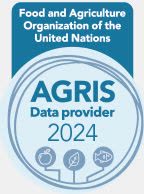A comprehensive analysis of agronomic practices for cultivation of cotton (Gossypium hirsutum L.)
DOI:
https://doi.org/10.63072/aab.23004Keywords:
CIM-496, CIM-499, Gossypium hirsutum, Growth parameters, Plant spacing, Sowing dateAbstract
Cotton, a versatile natural resource, holds a significant place in global socioeconomic dynamics. As the foremost source of natural textile fiber and a substantial contributor to oilseed production, cotton's impact on various sectors is great. Pakistan, a major player in cotton production and consumption, faces challenges in optimizing its yield due to multiple constraints. To enhance production, strategic agronomic interventions are imperative. The Central Cotton Research Institute (CCRI), Multan carried out a research study in 2023 to evaluate how sowing date and plant spacing affect different growth and yield characteristics in two cotton varieties, CIM-496 and CIM-499. The different treatments resulted in significant differences in the number of monopodial branches, sympodial branches, plant population, plant height, days until the first flower appeared, number of bolls per plant, boll weight, and seed cotton yield per plant. Sowing in the third week of April typically led to better outcomes in comparison to sowing later in May and June, particularly in terms of branch development, plant population, plant height, and yield characteristics. In the same way, increased plant spacing, especially at 39 cm, appeared to support improved growth and yield characteristics when compared to tighter spacing. CIM-499 displayed slightly superior performance compared to CIM-496 across different treatments. The significance of considering both the timing of sowing and the distance between plants in maximizing cotton growth and yield is illustrated by these results, providing valuable knowledge for implementing crop management techniques to improve productivity and quality. © 2023 The Author(s)
Downloads
Published
How to Cite
Issue
Section
License
Copyright (c) 2023 Advances in Agriculture and Biology

This work is licensed under a Creative Commons Attribution-NonCommercial 4.0 International License.





























